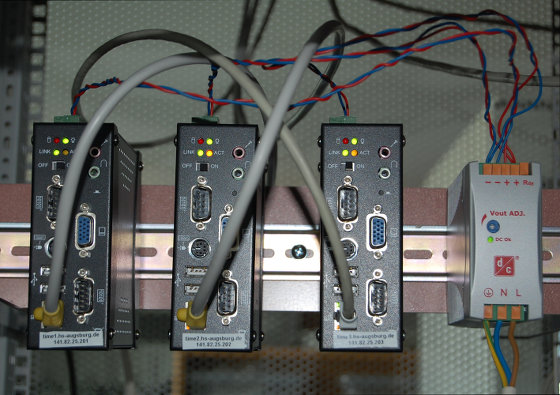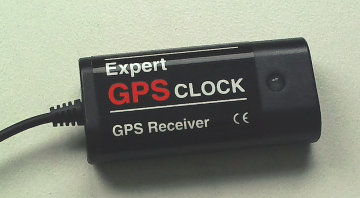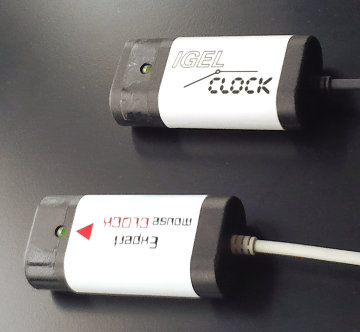TH Augsburg
NTP Service - NTP Subnet
NTP Hosts (active)

3 times timeX
time1, time2, and time3
are simple "industrial" PCs running Linux. They
are mounted on a common DIN rail in a 19" rack and
connected to the same power supply (right) and network switch.
These small PC boxes each have an AMD LX800 500 MHz
processor, 256 MB DDR RAM, 4 GB flash disk, and
a 100 MBit NIC.
Initially installed software was Linux 2.6.26 with NTP 4.2.4
in January 2012.
Because there are no moving parts in these PCs, neither hard disks
nor cooling fans, we hope for decent reliability and a long service
life.
The PCs have PS/2 keybord and VGA display connectors but
they are managed remotely with telnet and ftp.
These boxes are 10, 15, or even 20 times as fast as our old NTP
hosts, respectively, hence NTP service quality is much better than
before. It now depends almost entirely on network quality.
As pictured above, we started without any radio clocks, which would
be plugged into the RS232 or USB ports. At that time (2012) our
Internet connection was congested frequently what ruined NTP service
quality. That's why we dug out the old radio clock receivers again
and even bought a new GPS receiver.
Now each of the three servers had its own fallback time source.
These cheap receivers give not nearly the NTP service quality as
a well working network, but if and when the network was congested
they gave still better quality. They are no longer needed, though,
and have been removed.
Expert GPSclock

This simple GPS device has been made in 2012 by
Gude Analog- und Digitalsysteme GmbH
as well as the two simple DCF77 devices from 1992 (below).
Nowadays a GPS device is cheap but yet potentially a very
accurate time source. Unfortunately, this accuracy didn't make
it to the NTP hosts, perhaps due to processing latencies and
transmitting huge NMEA records. In practice it was not more
accurate than the DCF77 devices but much more delicate
as to radio signal.
IGEL:clock
Expert mouseCLOCK
Expert mouseCLOCK

Probably the IGEL:clock has been as well made by Gude, as the
Expert mouseCLOCK, both in 1992. They were still good fallback
time sources.
Drivers
All Gude "clocks", GPS or DCF77, new or old, are supported
by the NTP software. The
Reference Clock Support page lists all available
drivers. The GPSclock is treated as generic NMEA device (type 20)
while the new USB mouseCLOCK has its own mode (19) in the generic parse
driver (type 8) as has the IGEL:clock with adapter (mode 8).
The old RS232 mouseCLOCK can be seen as a Conrad DCF77 receiver
(mode 5) or as a generic "raw" DCF77 receiver
with the DTR line at high voltage and the RTS line
at low voltage for power supply (mode 14).